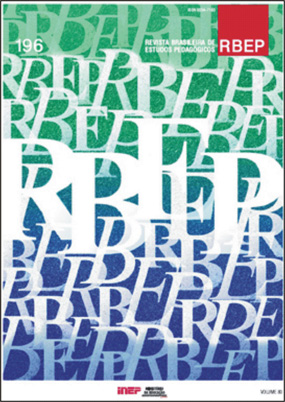A divisão interna do campo universitário: uma tentativa de classificação
Abstract
Reflete sobre uma possível hierarquização dos cursos universitários de Humanidades da Universidade de São Paulo (USP), a partir da análise da origem social e trajetória acadêmica de seus alunos. A análise das características socioculturais do estudantado permitiu observar que existe uma classificação velada dos cursos investigados. Mais do que isso, demonstra que existe uma correspondência entre as diferenças de recursos dos alunos e a procura por determinados cursos e carreiras. Trata-se de um esforço de compreensão do campo universitário e de parte dos agentes que o compõem. Palavras-chave: ensino superior; estudante universitário; origem social; trajetória acadêmica. Abstract The purpose of this paper is to propose a reflexion about a possible hierarchization of the universitaires humanities courses of USP, based on the analysis of the social origin and academic trajectory of it's students. The analysis of the social culturals characteristics of the students showed us the existence of a hidden classification in the studied courses. Moreover that, the analysis demonstrated that it exists a correspondence between the differences of economics ressources of the students and the demand for certains courses and careers. It is an effort on the understanding of the university field and on the understanding of parts of the agents who compose it. Keywords: universitary courses; universitary students; social origin; academic trajectory.Downloads
Download data is not yet available.
Published
01-12-1999
How to Cite
SETTON, M. DA G. A divisão interna do campo universitário: uma tentativa de classificação. Brazilian Journal of Pedagogical Studies , v. 80, n. 196, 1 Dec. 1999.
Issue
Section
Estudos
Once their work is accepted for publication, author’s copyrights are automatically relinquished to the National Institute for Educational Studies and Research Anísio Teixeira (Inep).
Since 2016, the journal Revista Brasileira de Estudos Pedagógicos (RBEP) uses the licence CC-BY.
Partial or total reproduction of the content of this Journal is permitted provided that the original publication is properly referenced, as well as a link to license CC BY 4.0 and to indicate any possible alterations made to the article.




















